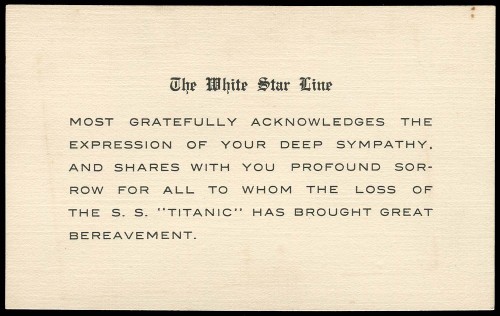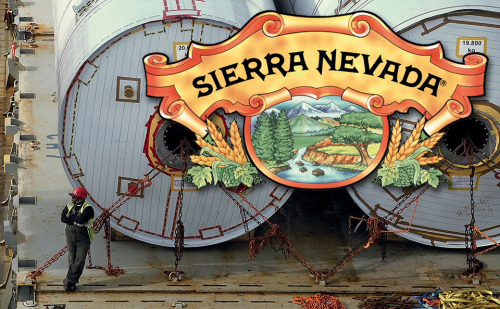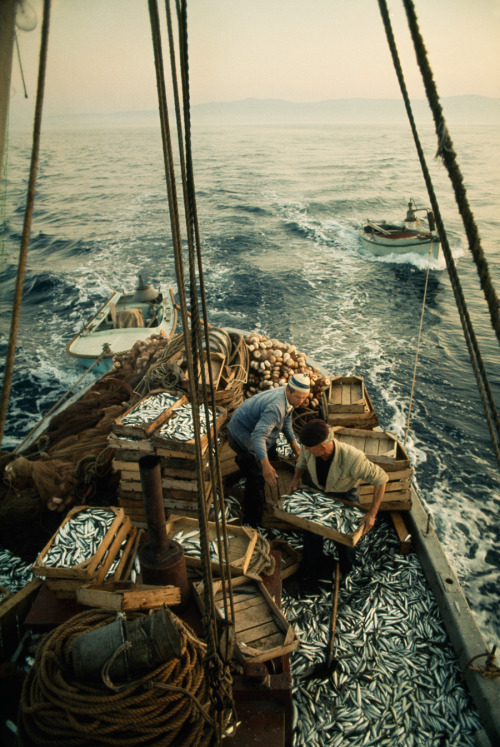
"This whole world is wild at heart and weird on top."
David Lynch.

"This whole world is wild at heart and weird on top."
David Lynch.
to be disciplined is to follow in a good way
to be self disciplined is to follow in a better way
consider everything an experiment
nothing is a mistake
there is no win
and there is no fail
there is only MAKE
don’t try to create and analyze at the same time
they are different processes
![]() be happy when you can manage it
be happy when you can manage it
enjoy yourself
it is lighter than you think
![]() there will be new rules next week
there will be new rules next week
![]() from the Immaculate Heart College Art Department Rules,
from the Immaculate Heart College Art Department Rules,
Sister Mary Corita
evidently, Rigmor is in town!
Sam.urmyThis is the Cape Henlopen, one of the ferries I ride when I go home to Boston. Was built as a military transport and landed in Normandy at D-Day, before being converted to a ferry.
Sam.urmyI was in the middle of a job search, paying the bills with consulting, freelance work, and science writing while pursuing the next academic appointment. Finally having a bit of time, I wrote a science fiction novel, something I’ve always wanted to do. Sometime last summer, our resident shark fanatic made a dangerous suggestion. “Why don’t you just cash in on the mermaid craze?”
“Fine,” I said, “if I don’t land a job by 2014, I’ll write a marine science-inspired paranormal mermaid romance novel.”
It’s 2014. This is Breaching Blue.

1912 WHITE STAR LINE ‘TITANIC’ ACKNOWLEDGEMENT OF SYMPATHY
mailed Tuesday April 23, 1912, little more than a week after the ‘Titanic’ sank, and only a few days after survivors arrived in New York. Card, no doubt sent in response to cabled messages, addressed to Brighton German Bank of Cincinnati, OH, and reads: ‘The White Star Line most gratefully acknowledges the expression of your deep sympathy, and shares with you profound sorrow for all to whom the loss of the S.S. “Titanic” has brought great bereavement.’
Sam.urmyLook how pissed off the whale is that God has decided to save Jonah.

To honor my dear, old chap Herman Melville (it’s his birthday), here is a 15th century initial from the Ranworth Antiphonal.
The image depicts Jonah appearing from the belly of the whale after he had spent three days there.
Sam.urmy#science

Photo courtesy Sierra Nevada Brewing Co.
The general cargo ship Star Fraser arrives in the Port of Charleston with 28 fermentation tanks for Sierra Nevada Brewing Co.’s new Mills River, N.C. brewery.
It took 14-days to get the massive 800- and 1600-barrel tanks from the manufacturer Ziemann in Bürgstadt, Germany to North Carolina.
The new brewery, due to open in 2014, will start with a capacity of about 300,000 barrels to help quench the thirst of beer drinkers up and down the east coast.

Fishermen load their catch of sardines into crates on the Adriatic Sea, May 1970.
Photograph by James P. Blair, National Geographic
One of the great things about field stations is the silliness they engender. I mean, there you are, in the middle of nowhere, with no one but other scientists thinking about the wonder of the natural world. Awe and wonder can only take you so far. And then, at some point, you cross over, and start to get a little silly.
It leads to things like dressing up as fouling panels, launching serious plans to make an ‘underwater office,’ elaborate nail-polish-marking designs for crab carapaces, and no small number of pranks.
And then, there’s this. This may be on the order of the silliest things ever to come out of field station. I heard the gull interns (seagull science is notorious for producing silliness alongside great science) talking about this idea to sync some of their videos up with the Les Mis soundtrack and now…now I found they’ve… well..
You must see this to believe it. Astounding. My hats off to the SML 2013 Gull crew. Marine science music video of the year?
(also, who is singing on ‘I dreamed a dream’ – amazing voice!)
Photos: Abner Kingman
Story: JP Lee
Dominic Papetti and his wife Karen set nets for herring in San Francisco Bay. They set along the Embarcadero, the shores in Sausalito. They set near the Bay Bridge and the ferry docks. It’s the roe they want, the eggs. In Japan, where most of the California roe goes, it is called kazunoko— a traditional dish symbolizing fertility and family prosperity.
The herring come in on the flood. They lay adhesive eggs among the pilings, rocks and kelp beds, all within the shadows of the city. The run begins in November and ends, typically, in March. Papetti is usually long gone before the Bay season has ended, trailering and then barging his 32-foot aluminum skiff from California to Southeast Alaska where he’ll fish the immense herring runs. He’s been making this seasonal run since 1976.
For herring, you get paid by the ton. Papetti’s boat can hold 18. Last year’s price for lean fish was roughly $500 per ton. But if you happened to get a set of fish heavy with roe, the price doubled. In 1979, the start of a huge roe-herring boom, the price climbed to over $2,000 a ton, making more than a few fortunes.
The Bay must’ve been quite a scene during those lucrative years. I’m willing to guess—I wasn’t there, didn’t see it—that the fishing effort exploded. When fishing is good and money is being made everyone wants to get in on it, especially when the fish are stacked up a five-minute steam from the fuel dock.
The quota last year for San Francisco Bay herring was about 3,000 tons. It wasn’t met—most serious herring boats were Alaska-bound before the run had ended. In 2012, only 33 boats chose to fish a Bay herring run estimated at 60,985 tons (well up from a record low biomass in the early 2000s of under 20,000). In 1980 the quota was 10,000 tons, and 430 permit holders worked on an estimated 99,600 tons.
The Japanese financed the boom. The value of the yen and an economy that wouldn’t stop rising made a gold mine out of not only the roe fishery but also, on the East Coast, butterfish and Maine urchins, and then, in the early 1990s, bluefin tuna. These species went from a domestic “why bother?” to a Japanese-import gold rush worth millions. And it all seemed to happen overnight: a few boxed tuna, a flat of butterfish, a bucket of herring roe, and a crate or two of urchins landed in Japan and hit the auction floor. Boom! Urchin fetched $100 a pound, bluefin averaged $18 to $32, butterfish went for a $1 (considerable when boats were putting down 75,000 pounds a night off Rhode Island), and West Coast herring roe hit $2,000 to $3,000 a ton.
Booms end, eventually. Some end quickly. Others go on and on. But they all end. (Think the Maine elver harvest will go forever?) Either the resource gets pounded and the stock dwindles to a little pile of scat. Or regulation catches up with the fishery, restricts effort, and freezes new entrants. Or consumer tastes change, as they do from generation to generation. Or the price stays too high for too long and buyers seek—and find, inevitably— cheaper substitutes. Or the economy tanks, the bubble bursts, the yen, dollar, euro sink like stones.
The herring come in with the flood. The spawn doesn’t happen all at once. It starts with a trickle, a few scouts ahead of the main push. At first, fishermen catch nothing but water, saying the timeless things fishermen say at the start of a season of anything: Soon. They’ll be here soon. Water’s too cold. Wind isn’t right. They’ll be here on the next moon. Then they start seeing a few in the net. A few tides later, they have a half ton, then another half ton, and another. Then, everyone’s covered in herring scales. The boats are covered. Deck, rails, down below. Scales in every corner, behind the electronics, under the floor mats. Half-tons have turned into five tons, ten. The fishing is good, day or night, bright days or cloudy. The run is on.
The herring stage in deeper water out in the center of the Bay. They wait for spawning cues, a biological alarm clock millions of years in the making. Then they swarm the shallows to spawn. The fish spawn in waves, starting farthest up the Bay. The ones thereafter drop down, closer to the mouth. Each push of fish spawns on a different piece of bottom. The fish don’t lay eggs on top of other eggs. They spread them out. After a big push of fish, days can go by before the next spawn. The fishermen wait, thinking about not only when, but where.
Dominic likes to set his gear—he’s allowed to fish two 65-fathom nets—in shoal water. He likes the sets closest to shore. Other guys will set outside of him. You’d think he’d be fenced in—that the outside nets would catch the inbound fish. But he’s a highliner. The shallows are where the fish want to end up and that’s where Dominic likes to be.
Photos by Abner Kingman at kingmanphotography
Story was made possible by a small contribution from Camilla Lee.
The post USA herring roe and Japan– A fishery that once boomed. appeared first on The Dented Bucket.
Chuck Graham captured the upper photo from nearby Roy, Wash.
Photos by Zach Harvey.
Story by JP Lee
Point Judith, R.I. — Sometimes on windless nights in May, when everything in the harbor is still, when there’s no boat traffic, no ferries backing in or out, no welders or grinders, no fishermen pulling heavy sweeps and chains across bulkheads, the squid—the loligo—will come into the shallows and lay in the glow of the draggers’ lights.
You get to the dock. It’s close to 2:30. You quietly open and close your car door. There is no wind. The harbor’s like a single sheet of black ice. You thread the line through the eyes of your rod. The fog has changed everything. There are no horizons. You can’t see any of the lights across at Snug Harbor or Jerusalem. You can’t see any of the streetlights by the ferry dock.
You walk onto the dock and head toward the decklights. The dock smells of pressure-treated wood and tar, burnt steel, hydraulic oil. One of the boats has its net hanging from a boom. The net’s been drying in yesterday’s sun. The closer you walk to it, the stronger the smell—seaweed, sand and twine.
Beyond the perimeter of the draggers’ lights everything has been absorbed, as if nothing were there. Everything inside the lights has tightened into focus. You see beads of moisture dripping down the sides of the steel hulls, down the net drums, down the rails, off the codends.
You start looking for squid. You don’t see any in the green water. Some tiny baitfish, juvenile silversides, are feeding. You’re thinking the bait is a good thing. It’ll draw the squid. You stand there, rod in hand. And even though the squid should’ve been inshore by now—the dogwoods have long since bloomed–you’re prepared to wait them out tonight. You tell yourself that if they show at all, they should show in the hour before dawn.
The long brooding notes of a night heron call out by the charter boat docks. You listen. The whole harbor seems consumed by its sound, as if every particle of vapor, from the Town Dock to the tip of the Center Wall, has carried the bird’s message.
Your glasses are useless. Your hair is sodden. You have enough water on your face to bathe a baby. Then it begins. Out at the edge of the light—where the shadows begin– you see squid. Few animals hover and glide better, in a kind of motionless motion. But when they want speed, they’ll jet through the water like a torpedo. You notice the silversides have changed their behavior–going from a loose feeding configuration to a tight school. You watch the squid pulse, changing colors from pink to red to white. There’re big—inshore spring squid tend to be large, and are often called “tubes.” You hold the squid jig in your hand and pause. You start thinking: Give it time. Let ‘em gather, let ‘em get aggressive. Be patient. Then, in a long swing, not a cast but a flip, you send the jig out. You watch it settle in a slow sink. The squid move to it. When the jig falls out of sight, you see a white tube down with it. Then you feel weight. It’s not a hit, just weight. You reel up. The squid deep red and mad, jets ink everywhere. You flip out another, the jig arching out into the lights.
The post Squid and Fog appeared first on The Dented Bucket.